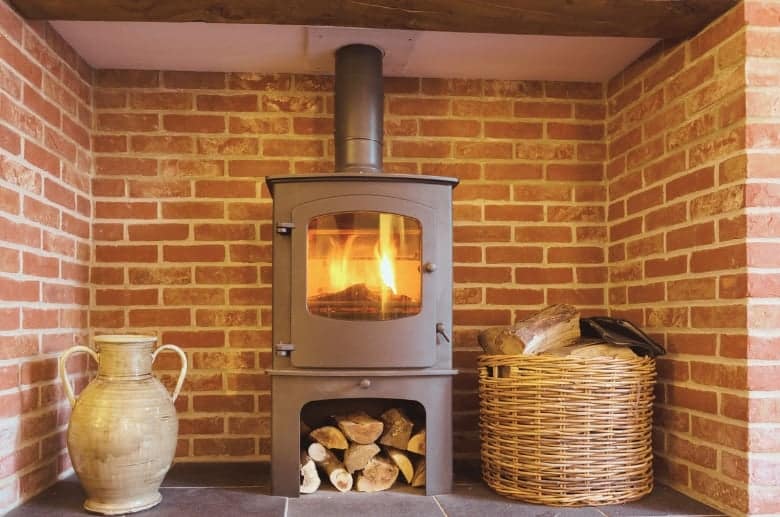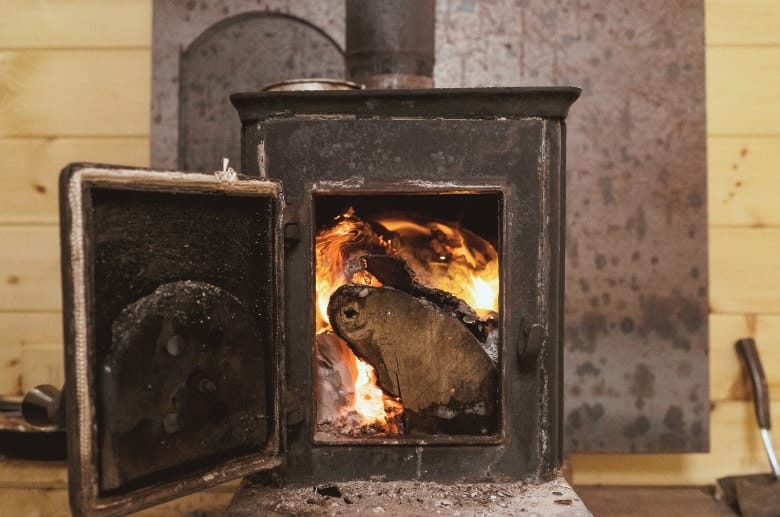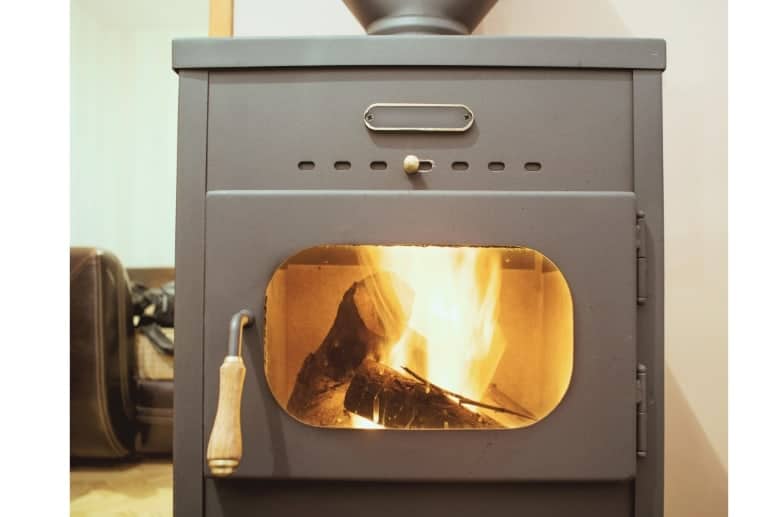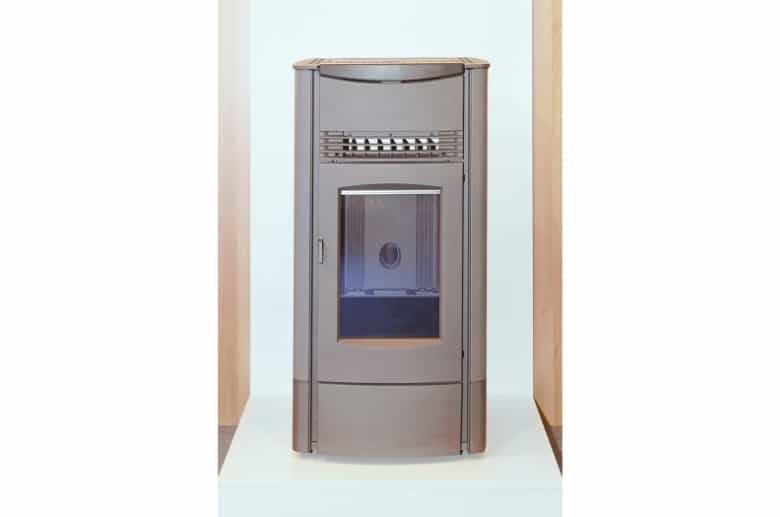Sitting in front of a wood stove and gazing into the comforting warmth of the dancing flames is a mesmerizing experience that evokes coziness, nostalgia, and a deep connection to nature. It’s a timeless activity that’s undeniably charming.
And despite modern heating technology advancements, wood stoves retain a special place in most American households. According to the Energy Information Administration (EIA), approximately 11.6 million homes in the US rely on wood stoves for heating.
Therefore, it’s important to understand the wood stove types before purchasing one for your house. This will help you decide on essential issues like efficiency, heating ability, and safety.
Factors to Consider When Buying a Wood-Burning Stove
Several crucial factors must be weighed carefully when purchasing a wood-burning stove. Here are the definitive answers to the most critical questions, ensuring you make an informed decision that perfectly suits your heating requirements:
Efficiency and Emissions
Wood-burning stoves are subject to regulations set by the Environmental Protection Agency (EPA) in the United States. The EPA establishes standards and regulations to control emissions from wood stoves, ensuring they meet specific environmental friendliness criteria.
For instance, in 2020, the EPA reduced wood stove smoke emissions from 4.5g/h to 2.0g/h to curb air pollution and promote cleaner burning practices.
As a result, modern wood stoves are designed to be highly efficient. This means they can extract more heat from their wood with minimal waste. According to EPA, most modern wood stoves have energy efficiencies of up to 85% to 90%, which means much lower energy bills for homeowners.
Heat Output
Stoves with high output can effectively heat larger spaces than those with lower heat outputs. Below are more reasons why considering heat output matters:
- Comfortable Heating: Selecting a stove with the appropriate heat output ensures your space is heated to a comfortable temperature.
- Energy Efficiency: A smaller stove in a large room will work harder to provide sufficient heat, increasing fuel consumption. Conversely, a larger stove in a smaller room may generate excessive heat, wasting energy and potentially overheating your space.
- Cost Savings: A stove with the correct heat output will efficiently warm your space without wasting energy. This results in long-term savings on your heating and cooling expenses.
For most wood stoves, the heat output ranges from 20,000 to 80,000 British Thermal Units per hour. However, it’s vital to note that the specific heat output range will vary depending on the wood stove’s size, model, and design.
Design and Materials
A well-designed stove ensures optimal combustion, maximizing heat output and minimizing wasted energy. Features like air controls, baffle systems, and secondary combustion chambers contribute to efficient and clean burning.
Moreover, common wood stove construction materials include steel, cast iron, and soapstone.
- Steel stoves are known for their strength and heat conductivity, allowing for quick and efficient heat transfer.
- Cast iron stoves are renowned for their excellent heat retention properties, absorbing and radiating heat even after the fire has subsided.
- Soapstone stoves also have a unique ability to store and slowly release heat. This feature allows the stove to provide longer-lasting and more consistent warmth in your home.
Lastly, a well-crafted stove can become a focal point in your living space, much like a fireplace does, enhancing the visual appeal and ambiance of the room. Choose an option that suits your style and home decor.
Size and Location
The size and positioning of your wood-burning stove inside your home impact its functionality and overall effectiveness. Here’s why this matters:
- Heating Efficiency: Find the right balance between the stove size and room dimensions for optimal heating efficiency.
- Safety and Clearance: Ensure your stove is at least 3 feet away from all combustible materials.
Cost and Budget
Here is a breakdown of the estimated expenses when using wood stoves:
- Fuel Cost: On average, the cost of firewood can range from $3,000 to $3,500 annually, with variations depending on location, availability, and wood quality.
- Maintenance Cost: Annual maintenance costs will range from $135 to $176 or possibly more, depending on the necessary services from a chimney or heating company.
——
Do You Need to Hire Chimney & Fireplace Expert?
Get free quotes from qualified experts near you. No commitment required!
——
What Are The Different Wood Stove Types?
Various wood stoves are available, each offering unique features and benefits. Here are the most common wood stove types:
1. Catalytic Wood Stoves

Catalytic wood stoves utilize a catalytic combustor to increase combustion efficiency and reduce emissions. The catalyst, located in a designated chamber within the stove, initiates a secondary combustion process, allowing for complete wood burning and reducing emissions. Common models include the Hearthstone Heritage 8021 and Buckstove 91.
Energy Efficiency and Heat Output
Catalytic wood stoves are highly energy efficient, typically achieving 80-84% or higher efficiency rates. The heat output of catalytic wood stoves can range from around 25,000 to 80,000 BTUs per hour, depending on the model and size.
Installation and Maintenance
Installing catalytic wood stoves typically involves hiring a professional team to ensure a safe and efficient setup. The process usually includes inspecting the existing chimney for compliance with local building codes and regulations or installing a new one.
Regular chimney cleaning is also essential to remove creosote buildup, and the stove’s interior and exterior should be kept clean and inspected regularly for any issues or damage.
Safety and Regulations
Ensuring the safe operation of catalytic wood stoves is paramount due to the potential risks associated with improper usage. Here are a few safety tips you can apply to ensure safety:
- Install and maintain smoke and carbon monoxide detectors where the wood stove is located, This is a critical step in ensuring the safety of your household, as it can help detect any carbon monoxide from wood stove that may be present.
- Follow clearance requirements and maintain proper distances between the stove and combustible materials.
- Always use proper safety equipment, such as heat-resistant gloves, when handling hot components or fuel.
Environmental Impact of Using Catalytic Wood Stoves
Catalytic wood stoves are known for lower emissions than other wood stoves. Most of their latest models are EPA certified, with 2.5 g/hr or under emissions. This helps reduce particulate matter and other pollutants, contributing to better air quality and less environmental impact, which leads to a better quality of life.
Cost of Catalytic Wood Stoves
Most catalytic stoves cost between $1,600 to $2,600, but this can vary according to the model type. The installation costs are around $3,000 to $3,500, depending on factors such as chimney modifications, floor protection requirements, and professional installation services.
Fuel costs for catalytic wood stoves depend on the availability and price of firewood in your area. However, you can expect to spend up to $2,000 per heating season.
Pros
- High energy efficiency and heat output.
- Reduced emissions and better air quality.
- Longer burn times and improved fuel efficiency.
Cons
- Catalytic combustors require regular maintenance and replacement.
- Higher upfront costs compared to non-catalytic wood stoves.
- More complex operation and maintenance requirements.
2. Non-Catalytic Wood Stoves

Unlike catalytic wood stoves, these wood stoves rely on combustion air control and internal design to optimize burning efficiency without using a catalytic combustor. They utilize a combination of primary and secondary combustion to burn wood efficiently.
Primary combustion occurs in the firebox, while secondary combustion involves re-burning the smoke and gases produced by the primary combustion. The most common models include the Vermont Casting Defiant and Napoleon S-Series Wood Stove.
Energy Efficiency and Heat Output
Non-catalytic wood stoves typically have around 65-75% energy efficiency rates.
The heat output of non-catalytic wood stoves can range from approximately 20,000 to 75,000 BTUs per hour, depending on the size and model.
Maintenance Needs
Ashes should be regularly removed from the stove, and the stove’s interior and exterior should be cleaned periodically. Additionally, gaskets and seals should be inspected and replaced to maintain airtightness and optimal performance.
Safety and Regulations
Follow proper clearance guidelines to ensure safe distances between the stove and combustible materials. Install and maintain smoke and carbon monoxide detectors where the wood stove is located.
Also, use a fire-resistant hearth pad or floor protection to prevent accidental fires from sparks or embers.
Environmental Impact of Using Non-Catalytic Wood Stoves
Modern non-catalytic stoves are designed to meet strict emission standards, reducing environmental impact. According to Alliance for Green Heat, recent non-catalytic wood stoves have 4.5 g/hr or less emissions.
Cost Evaluation of Non-Catalytic Wood Stoves
Non-catalytic wood stoves cost around $500 to $1,500, slightly less expensive than catalytic stoves. The installation will cost around the same figures as catalytic stoves ($3,000 to $3,500). However, this varies depending on chimney modifications, floor protection requirements, and professional installation services.
Due to its lower efficiency percentage, you’ll spend around $2,500 on fuel per heating season for your non-catalytic wood stoves. However, this cost is subjective depending on the availability and price of firewood in your area.
Pros
- Lower upfront costs compared to catalytic wood stoves.
- Less maintenance and no catalytic combustor replacement are needed.
- Easy to start and operate
Cons
- Lower energy efficiency compared to catalytic wood stoves.
- Higher emissions compared to catalytic wood stoves.
- Less control over combustion and burn time.
3. Hybrid Wood Stoves

Hybrid wood stoves combine the features of both catalytic and non-catalytic wood stoves, offering enhanced efficiency and cleaner burning. These stoves incorporate a catalytic combustor, air controls, and design elements to optimize combustion and reduce emissions.
How Do They Work?
Hybrid wood stoves utilize a catalytic combustor for secondary combustion, similar to catalytic wood stoves. They also incorporate air controls and internal design features for primary combustion and efficient heat transfer, similar to non-catalytic wood stoves.
——
Do You Need to Hire Chimney & Fireplace Expert?
Get free quotes from qualified experts near you. No commitment required!
——
Energy Efficiency and Heat Output
Hybrid wood stoves typically have energy efficiency rates ranging from 75-85%.
The heat output of hybrid wood stoves can vary, ranging from approximately 25,000 to 80,000 BTUs per hour, depending on the specific model and size.
Installation and Maintenance Needs
The installation complexity of hybrid wood stoves can vary depending on the model and specific requirements. Consult with professional contractors for proper installation to ensure safety and building regulations compliance.
Maintenance needs are similar to those of other wood stoves, including regular chimney cleaning, inspection of gaskets and seals, and proper ash removal.
Safety and Regulations
Hybrid wood stoves are subject to common safety regulations governing clearances, proper venting, and the use of approved materials. We highly recommend that you follow the manufacturer’s guidelines to ensure you are in line with the required regulations.
Also, consult local regulations for specific requirements regarding installation and operation before proceeding with the project. This will help you avoid potential fines, penalties, or safety hazards.
Environmental Impact of Using Hybrid Wood Stoves
Hybrid wood stoves are designed to meet strict emission regulations, resulting in lower emissions than traditional wood stoves. Most units have a 1.38 to 2.0 g/hr emission rate, contributing to cleaner burning and reduced particulate matter.
Cost Evaluation of Hybrid Wood Stoves
Purchasing costs for hybrid wood stoves can range between $2,100 to $4,400. The installation cost for this unit is around $3,000 to $3,500, but this amount will vary depending on chimney modifications and professional installation services.
You’ll spend around $2,000 per heating season to run your hybrid wood stove, but this cost will vary depending on factors like:
- Heating needs.
- Local market prices include.
- Wood type, availability, and quality.
If you are considering purchasing a hybrid woodstove, here are the advantages and disadvantages to expect.
Pros
- High energy efficiency and clean burning.
- Improved heat output and distribution.
- Lower emissions compared to traditional wood stoves.
Cons
- Higher upfront costs compared to conventional wood stoves.
- Installation complexity may require professional assistance.
- Maintenance requirements may be more involved compared to other wood stoves.
4. Automated Wood Stoves

Automated wood stoves are among the latest and most advanced types. These stoves use an automated system to adjust the air-to-fuel ratio, allowing greater control over heat output, efficiency, and carbon monoxide emissions.
Automated stoves regulate the burning rate with a fan blower that adjusts the air intake and exhaust according to the stove’s temperature control settings. Some popular models include the Quadra-Fire Discovery II and King Classic 40.
Energy Efficiency and Heat Output
When it comes to energy efficiency and heat output, automated wood stoves have an impressive range of up to 81% efficiency. They can produce between 56,000 to 95,500 BTUs, making them viable options for huge spaces.
Installation and Maintenance Needs
Installing automated wood stoves is relatively simple compared to other wood stoves. However, you’ll still require a professional contractor to do the job effectively. Once installed, a certified technician must inspect the stove yearly for proper performance and safety.
Regular maintenance tasks should also be performed at least every six months to ensure the stove operates optimally. This includes:
- Cleaning and inspecting the chimney, flue, and spark arrestor
- Checking pipe connections for leaks
- Ensuring that all screws are tight
Safety and Regulations
Automated wood stoves must comply with Environmental Protection Agency (EPA) regulations, producing an emission rate of 4.1 grams per hour or less. They must also pass additional safety tests for flame patterns and other potential hazards.
You can employ the following guidelines to ensure that you operate your wood stove safely:
- Ensure your chimney is cleaned regularly and inspected annually by a professional sweep.
- Only use dry, seasoned wood, and avoid burning treated wood or trash in your stove.
- Use a fire screen for added protection when adding more fuel to the fire.
Environmental Impact
The automation of combustion processes in these stoves ensures more consistent and controlled burning, resulting in fewer harmful emissions being released into the atmosphere. This improves local air quality and reduces the stove’s overall carbon footprint.
Cost Evaluation of Automated Wood Stoves
The cost of automated wood stoves can vary depending on the model but generally range from $3,000 to $4,000 for the stove alone. Installation costs may add another $2,500 to $3,500, and fuel costs can range from around $2,000 to 3,000 per season.
Pros
- High efficiency
- Adjustable air intake and exhaust to control the heat output
- Relatively simple installation
Cons
- It can be expensive to install, as some units require extra wiring and a thermostat for automation.
- Less control over the temperature than with manual stoves.
- Increased fire risk due to automated operation if not monitored carefully.
5. Circulating Stoves
Circulating stoves use two or more combustion chambers and a heat-exchange system to extract the maximum energy from the burn. The air inside the stove is circulated through a series of passages, ensuring that all of it comes in contact with the hot surfaces within the unit.
How Do Circulating Stoves Work?
Circulating stoves draw cold air in through an intake vent at the bottom. The air heats up in the combustion chamber and then passes through a heat exchanger before exiting at the top of the unit. Some of the more popular circulating wood stoves include the Jotul F500 Oslo and the Osburn 1000.
Energy Efficiency and Heat Output
Circulating wood stoves are usually around 75-80% efficient. They can produce up to 70,000 BTUs per hour of heat output, making them highly reliable.
Installation and Maintenance Requirements
Installing a circulating stove can be more complicated than wood stoves. You’ll need to ensure the unit is properly vented and connected to an outside air source.
Regular maintenance is also required to ensure maximum efficiency. This includes cleaning the ash pan and checking the seals and gaskets to ensure they are tight.
Safety and Regulations
These wood-burning stoves offer great convenience, eliminating the need to tend a fire manually. However, there are vital safety and regulatory considerations you must take into account when using this type of stove.
Most jurisdictions require an automated wood-burning stove to meet certain safety requirements, including those established by the EPA. Circulating stoves must have an EPA g/hr of 4.1 or lower to comply with federal regulations.
You should also check with your local government for additional installation and operation regulations.
Environmental Impact
Circulating stoves are designed to burn wood more efficiently, which reduces the amount of particulate matter released into the atmosphere compared to older, traditional stoves.
Although circulating stoves produce fewer particulate emissions than older ones, they can still emit pollutants such as nitrogen oxides and volatile organic compounds, contributing to smog and air quality issues.
——
Do You Need to Hire Chimney & Fireplace Expert?
Get free quotes from qualified experts near you. No commitment required!
——
Cost Evaluation of Circulating Stoves
The initial cost of purchasing a regular circulating stove can range from $2,300-$3,000 or more, depending on the size and model. Installation costs typically run around $2,500-$3,200, not including building materials like brickwork or hearth pads.
The fuel costs of this unit will depend on the type of wood used and your heating needs. Generally, a cord costs between $250 to $300 per cord. This means the fuel costs for a season of burning wood in a circulating stove can range from $1,800 to $2,000.
Pros
- Affordable initial cost
- Economic fuel costs
- It can be used to heat multiple rooms
Cons
- Complex installation than other types of wood stoves
- Requires a larger amount of wood compared to other stoves
- It can be more hazardous if not installed correctly or operated safely
6. Radiant Heaters

These wood stoves are a simple yet effective design featuring a ceramic box with metal sides. These units work by transferring heat from the burning solid fuel to the interior walls of the stove, which then radiates this warmth into the living space. Popular models include Englander 13-NCL and Timberwolf Economizer EPA Wood Stove.
Radiant Heaters Efficiency and BTU Rating
Radiant heaters are quite energy efficient, ranging from 65% to 77%, and have a BTU range of 10,500-75,000.
Installation and Maintenance Requirements
Installation of radiation heaters is relatively more straightforward than most wood stove types. These freestanding stoves can usually be hooked to a chimney or smoke pipe. And like most wood stoves, regular maintenance and inspection are crucial for the unit’s optimum performance.
Moreover, the maintenance needs for the radiant heater are minimal and involve the following:
- Periodic cleaning of the stove pipe
- Emptying of ashtrays
- Regular sweepings of the chimney
- Inspection for proper operation.
Safety and Regulation
Radiant heaters are generally considered safe when used according to the manufacturer’s instructions and when installed correctly. However, there are some safety considerations to keep in mind:
- Fire hazards
- Burns
- Carbon monoxide (CO) risk
The safety and installation requirements for radiant heaters may vary depending on the type and location of the heater. Complying with local building codes and regulations for installing these heaters is essential. For instance:
- In some areas, gas-powered radiant heaters require professional installation and regular inspections to ensure compliance with safety standards.
- Electrical radiant heaters must be installed according to electrical codes to prevent hazards like overloading circuits.
Environmental Impact
The environmental impact of radiant heaters can differ based on the type of fuel they use and their energy efficiency. Here are some considerations:
- Electric Radiant Heaters: These heaters don’t produce direct emissions during operation, making them more environmentally friendly regarding local air pollution. However, if the electricity is primarily generated from fossil fuels, the indirect emissions associated with its operation can still contribute to greenhouse gas emissions.
- Gas-Powered Radiant Heaters: Gas heaters emit greenhouse gases like carbon dioxide (CO2) and may release nitrogen oxides (NOx) and other pollutants depending on their combustion efficiency.
- Energy Efficiency: High-efficiency models can reduce overall energy consumption and, consequently, the associated greenhouse gas emissions.
Cost Evaluation of Radiant Wood Stoves
The initial cost of a radiant wood stove ranges from $1,200 to $4,000, with installation costs ranging from $1,000-$2,000, depending on size and model. The fuel per season will cost between $900 to $1,200, depending on how often you use it.
Pros
- It is energy efficient
- It has a simple installation procedure
- It is easy to maintain
Cons
- It has a lower BTU Output than other wood stoves
- Limited styles are available.
- It heats slowly
——
Do You Need to Hire Chimney & Fireplace Expert?
Get free quotes from qualified experts near you. No commitment required!
——
What Is the Newest Technology in Wood Stoves?
The newest wood stove technology focuses on improving efficiency and reducing emissions. Most modern wood stoves are now designed with secondary burn systems that completely burn combustion gases and use less wood for the same heat. This reduces emissions, as well as increases efficiency and cost savings.
Wood stoves are also becoming easier to use and maintain with new features such as automatic temperature controls, programmable thermostats, and electronic ignitions. These features allow users to set the stove for optimal efficiency and convenience, helping to reduce overall consumption of wood and energy costs.
Conclusion
Wood stoves are an excellent choice if you’re looking for a sustainable and reliable heat source. Proper selection and maintenance can provide up to 20 years of service while reducing your carbon footprint and saving money on energy costs.
You can find the perfect wood stove for your home by considering your needs, budget, and preferences. Ensure you research, compare your options, and consult professional assistance for the best results.






